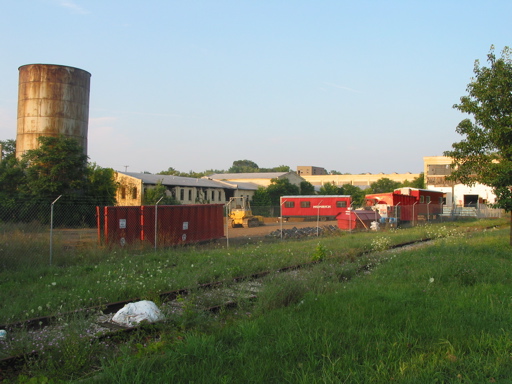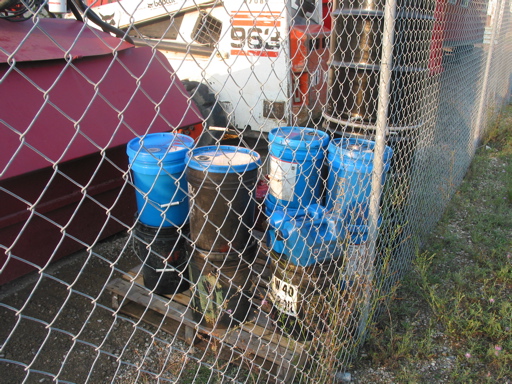The Demolition of Allied Paper
With the city beginning demolition at Allied Paper, I decided to swing by and take some pictures during the first week of August. The demolition project has only been active for a week or two at this point, and as of now, the company doing the demolition seems to still be in the process of setting up the worksite. They have established a couple of trailers and a tent on the property, and have brought telephone (or some type of data) service to one of the trailers. They have also installed a demarcation point for electrical service in front of Mill C, but as of the taking of these pictures, it had not yet been connected to the power lines.
The workers have also been removing asbestos and general waste from the mills, and will probably continue to do so for a couple of months prior to actually tearing down any of the buildings, according to a press release in the Kalamazoo Gazette. The contractor Homrich is handling the demolition project for the city.
The following are some pictures I took after the first couple weeks of demolition:
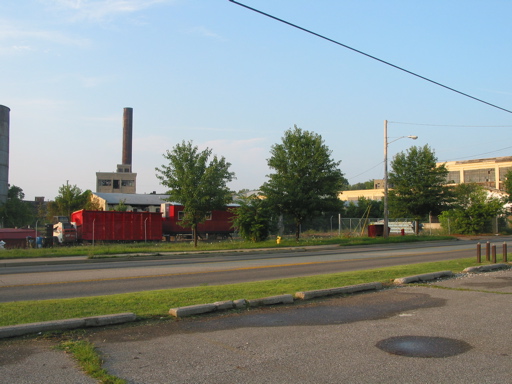
As you can see, Homrich, the company handling the demolition contract has started to establish a presence in front of Mill C.
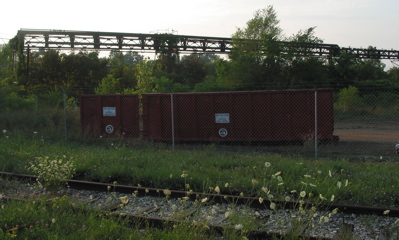
They've got a couple of large daily recycling bins...
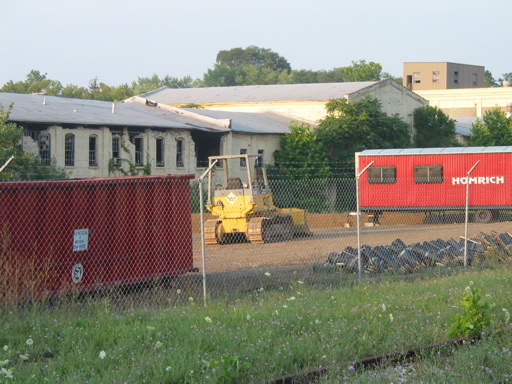
They've got a bulldozer that they've been using to create a makeshift road from Alcott Street to the back of Mill C.
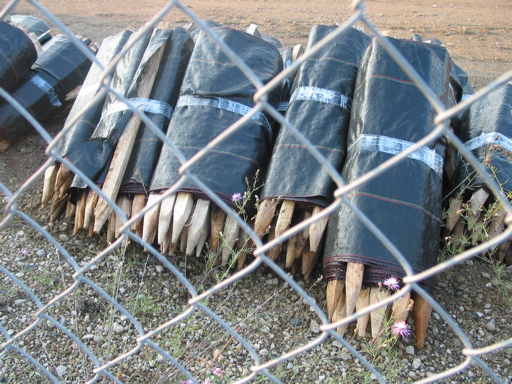
I wonder what they're planning to use all these stakes for.
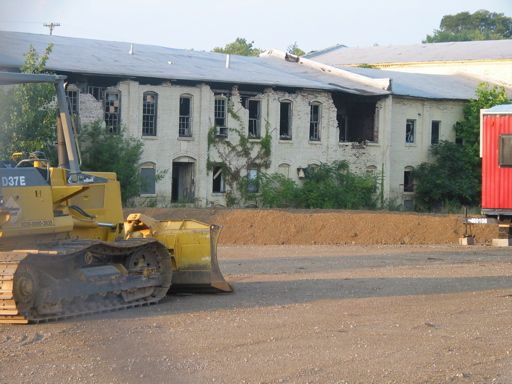
Here's a side view of that road they've been building.
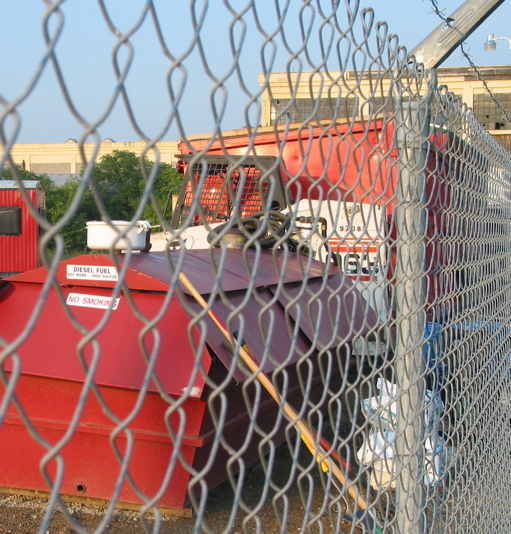
Probably in order to honor Allied Paper's pollution traditions, Homrich is using high sulfur diesel fuel which is only legal for use in off-road vehicles and equipment. (Actually, all large construction projects that I've seen use this type of fuel.)
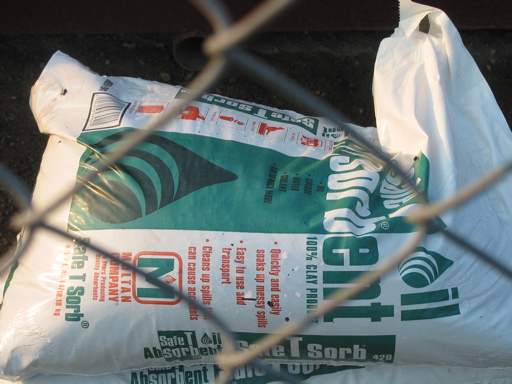
Some bags of "Safe T Sorb" lie on the ground near Mill C's fence. Evidently you can pour Safe T Sorb on spilled materials in an attempt to try to absorb them. I suppose that this would be particularly handy if the material spilled happens to be toxic or otherwise hazardous.
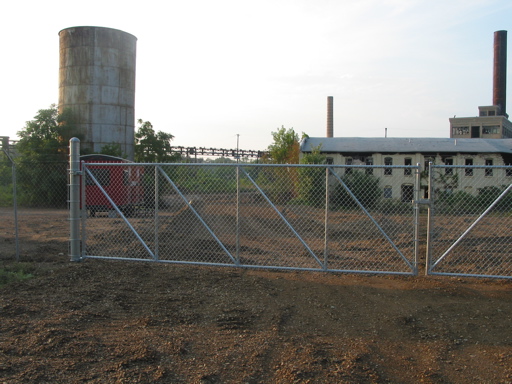
Here's a view directly down Homrich's makeshift road from Alcott Street.
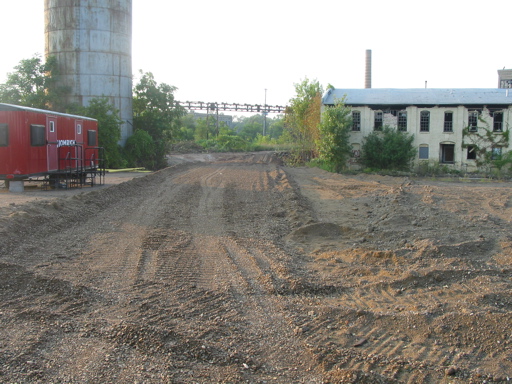
It looks a lot smoother than what was there before. I imagine that it was necessary to make this road since the hill in back of Mill C is almost certainly too steep for any large truck to navigate.
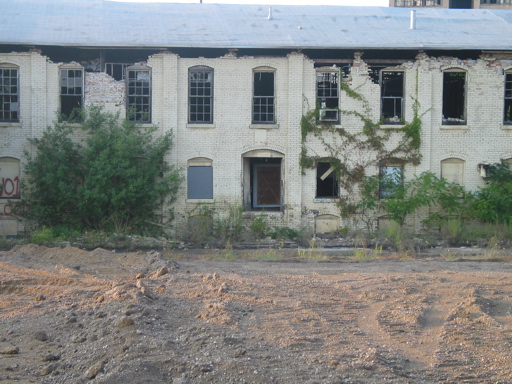
The workers have opened this arched door/window to Mill C, revealing a large ambiguous object inside.
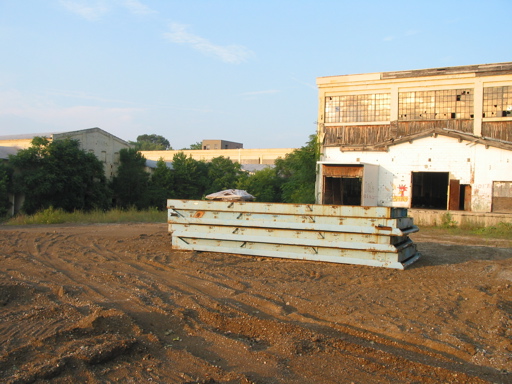
These metal objects lie in front of Mill C's main warehouse. I wonder if they were removed from the factory, or if they were brought in to provide temporary structural support or something like that.
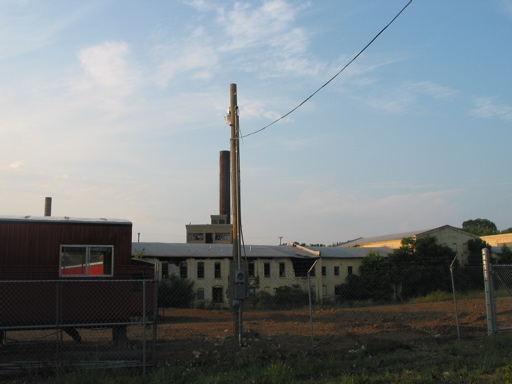
Homrich appears to be in the process of establishing utility service to the mill complex. This pole has an active telephone/data cable already, and appears to also be wired to receive power from the electric utility.
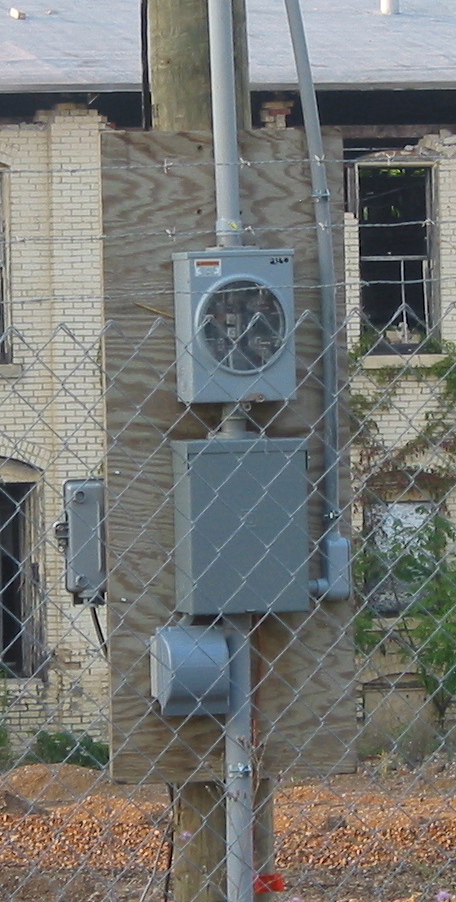
Judging from the look of this meter enclosure, the electrical service is going to be a standard 120/240 Volt hookup.
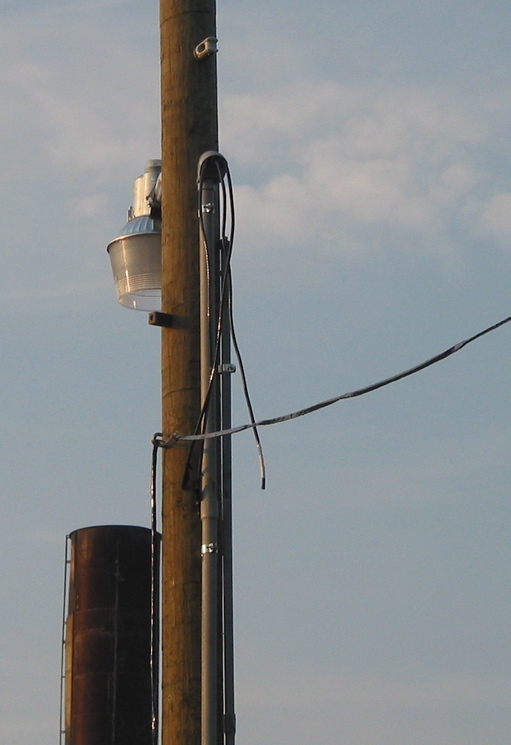
The wire coming from the pole is a telephone/data line with a demarcation box lower on the pole. The wires dangling from the conduit are for AC power service but have not yet been connected to the power lines.
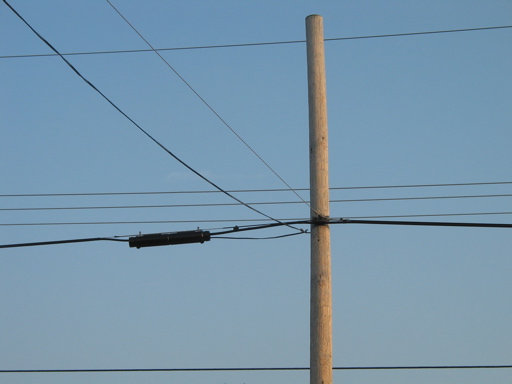
The phone or data lines, on the other hand, have already been connected.
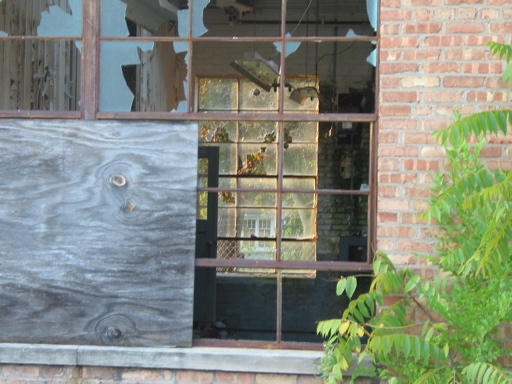
The position of the sun in the sky allows a look inside the Roll Grinding Room building.
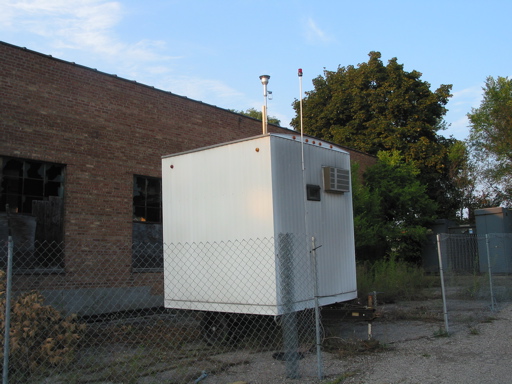
This strange enclosure has been installed just outside the Roll Grinding Room. It is connected to electrical and phone or data (via a CAT3 cable) services, and its air conditioner was running when I took this picture. The red light on the pole above the enclosure was not lit when I was there, and I was unable to figure out what the other device protruding above the enclosure is.
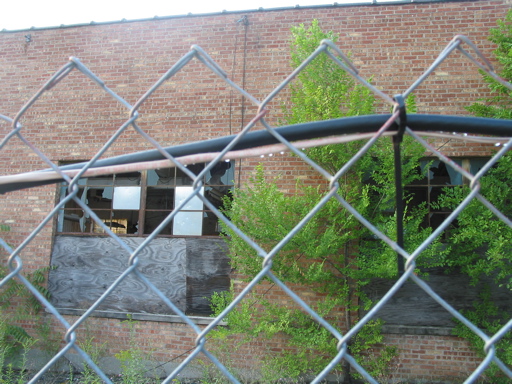
These are the power and CAT3 cables running from the enclosure. Unfortunately, the camera seems to have focused on the roll grinding building instead of the cables themselves for this shot. I thought that I used manual focus while taking this picture, but evidently I did not.
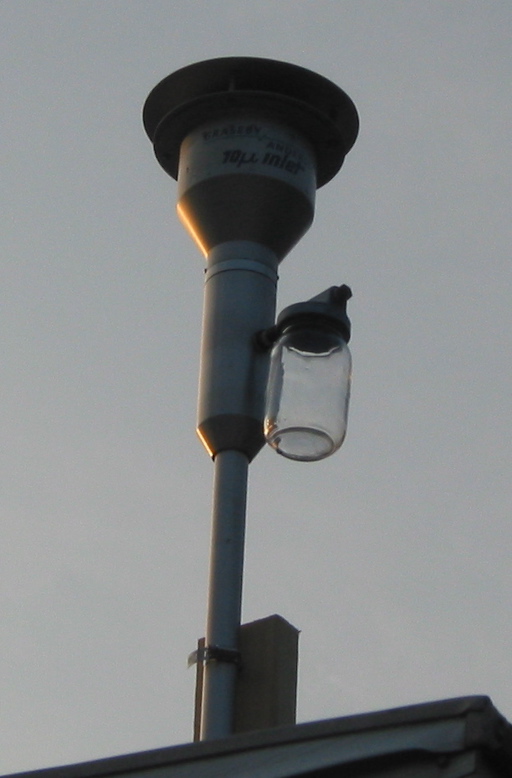
One really has to wonder what this thing is for. At least I do. I can't quite read the name of the manufacturer on the vent, but the text below that seems to read "10 Micron Inlet." A friend of mine came up with the idea that it might be a device to monitor the amount of asbestos in the air, but we both decided that that didn't make a whole lot of sense since the factory is surrounded by residences and businesses in many areas, but that this is the only such device that seems to have been installed. Maybe someone can ask a member of the demolition crew what it is for if they happen to be there during working hours.
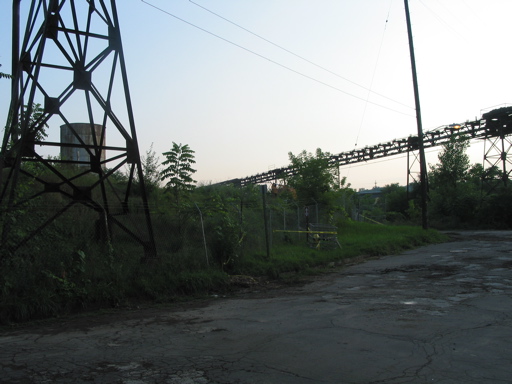
The fire hydrant behind Mill C is now being used to feed a garden hose which was running into the mill on the day this picture was taken.
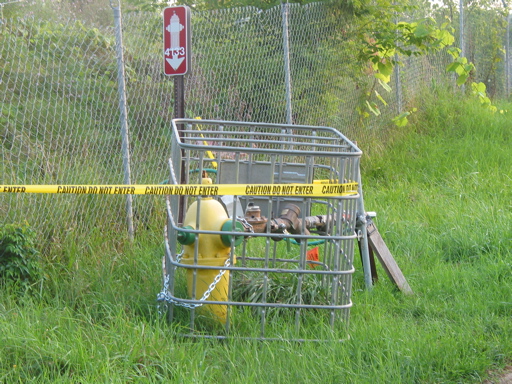
A closer look at the hydrant attachment... It seems like they would use something larger than a standard garden hose, but perhaps this is all the water they need. The water is presumably used to spray down asbestos-containing materials prior to removal so that not as many of the asbestos particles become airborne.
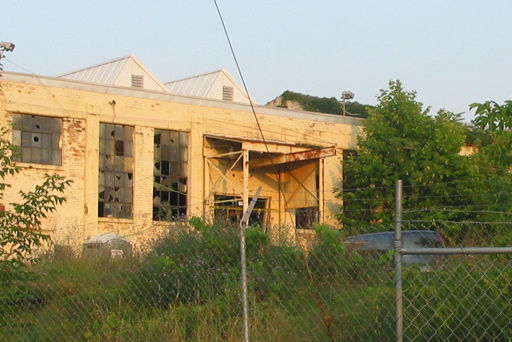
I didn't walk up the hill to get a closer look at it, but there is a porta-potty next to Mill C, as well as a vehicle. More vehicles have been present when I have driven by during working hours.
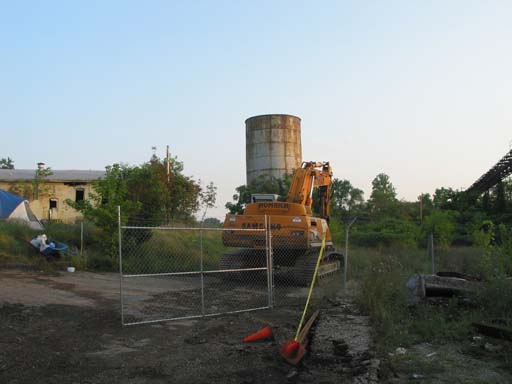
A tent and a large backhoe have been placed behind Mill C, by what appears to be the main work area at the moment.
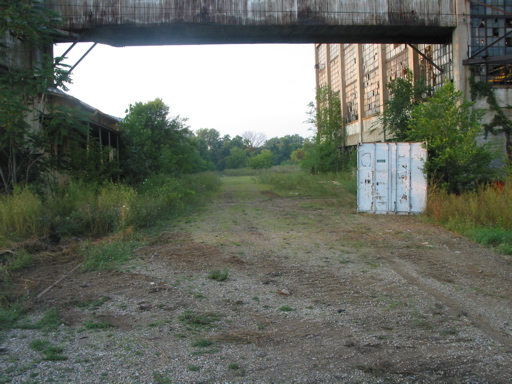
This container has been placed next to the Powerhouse since the last time I was there, and there appear to be truck tire tracks going all the way back to the other end of Mill D.
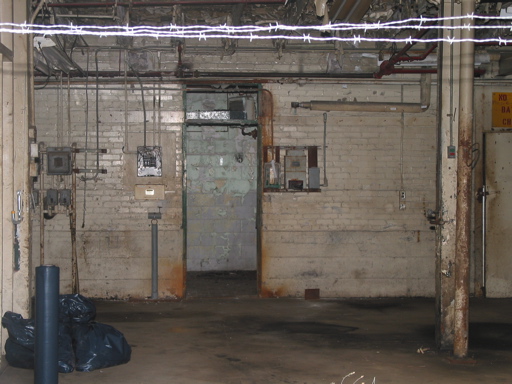
They have torn the main door off of the garage in front of Mill D as well.
That was all the time I had to take pictures on that particular evening, but I will be taking and posting more as the demolition progresses.
Back to the Allied Paper Mill Site
Back to the AlliedPaper.org Index
